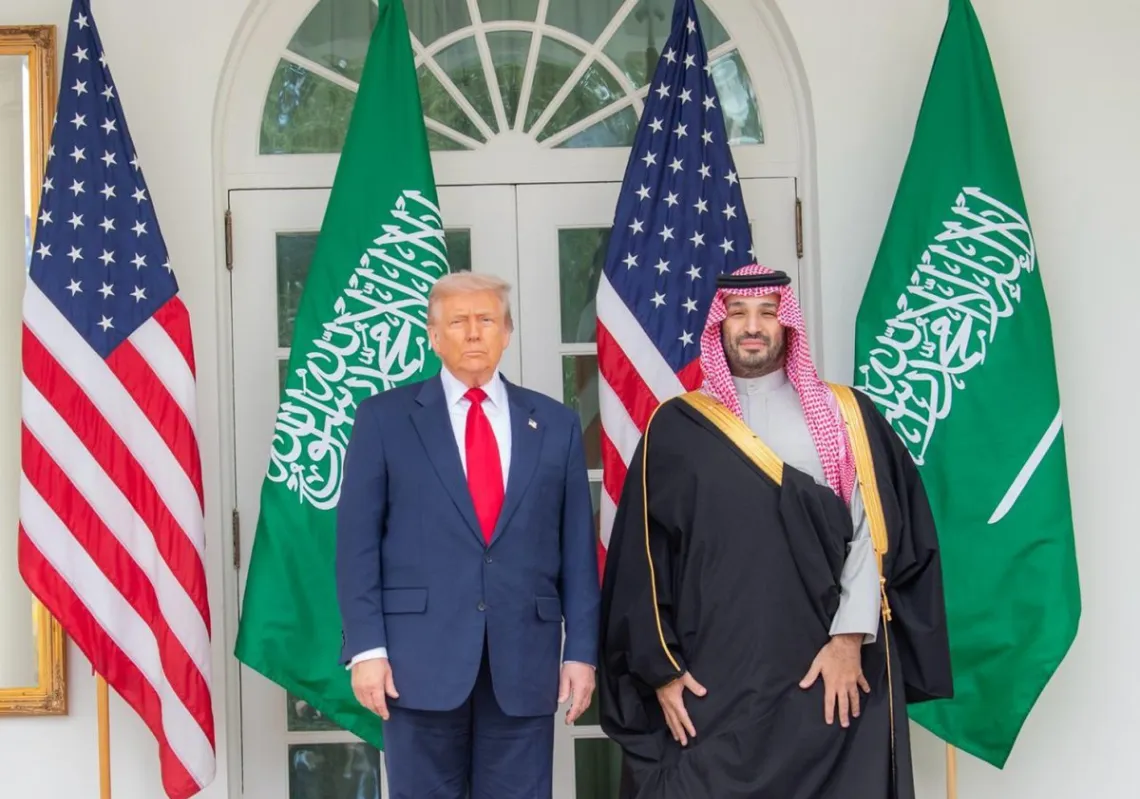Chinese President Xi Jinping formalized the concept of civil-military fusion as part of the extensive military reforms laid out in his 2016 five-year plan. He established a new Central Commission for Integrated Military and Civilian Development, with himself as its head. The commission's goal is to promote the development of dual-use technology and integrate existing civilian technologies into the arsenal of the People's Liberation Army (PLA).
The United States and its allies should take seriously Beijing's efforts to militarize China's technological base. Yet they should also recognize the strategy's limitations, to avoid overreacting in ways that would prove counterproductive. China's bureaucratic and authoritarian approach to civil-military fusion is likely to waste considerable time and money. By trying to control innovation, Beijing is more likely to delay and even stifle it.
The United States will fare no better if it tries to mimic China's model of civil-military fusion. Instead, it should build on existing U.S. advantages in research and technology-advantages that are increasingly at risk not because of China but because of a lack of agility and creativity among U.S. planners and policymakers.
Washington does need a strategy to strengthen its national security technology and industrial base, but it should be one that is centered on collaborative disruption that generates the right incentives for innovators, scientists, engineers, venture capitalists, and others. With forward-looking changes in the Defense Department and smart investments across government, the United States can secure the edge in defense capabilities on its own terms.

CATCHING UP
Four types of Chinese entities participate in civil-military fusion. There are traditional Chinese state-owned defense contractors and their many subsidiaries (some of which also sell into the commercial market); private dual-use manufacturers contributing research and development (R & D) and producing subcomponents for the main defense contractors and for the PLA directly; 43 PLA-supervised universities and at least a dozen state-run think tanks conducting research that feeds directly into Chinese weapons systems; and six quasi-private venture capital and private equity firms that invest in cutting-edge technologies.
Civil-military fusion sets off alarm bells in Washington for several reasons. Because Chinese dual-use R & D funding often falls outside the formal PLA budget, it can be hard to track and may be quite high. One recent study of the Chinese defense supply chain by the research firm C4ADS noted that at least six quasi-private investment vehicles partially or wholly own at least 232 companies involved in China's defense-procurement network. And in the opaque Chinese system, it is virtually impossible to find a budget for civil-military fusion initiatives. (It is worth noting, however, that civil-military fusion may bring a degree of transparency to PLA procurement, since by broadcasting their desire to sell to the military, Chinese companies give Western analysts a sense of which technologies the PLA is targeting.)
What is more, unlike their Western counterparts, Chinese companies don't have the option of turning down government requests to share technology. And it is all too easy for Western companies and institutions to unwittingly contribute to the PLA's advancement, given the bewildering array of contractors, subcontractors, academic institutions, and semiprivate investment vehicles involved in civil-military fusion. In one famous case, after 75 percent of the British company Dynex Semiconductor was acquired by a Chinese civilian locomotive company, an advanced technology developed by Dynex ended up in the aircraft launch systems on China's first domestically built aircraft carrier.
Still, China isn't ten feet tall. For one thing, it is coming from far behind. Historically, the PLA has depended almost entirely on 11 large state-owned enterprises for procurement and R & D. Until recently, many of these were Maoist-era relics, largely cordoned off from the actual economy. In 2010, only an estimated one percent of Chinese tech firms were involved in defence. The PLA is in "urgent need of improving its informatization (i.e. applying the digital revolution to the military)," a recent PLA white paper on defense strategy specifically warned. "China's military security is confronted by risks from technology surprise and growing technological generation gap."
To catch up, China's military in some ways seeks to emulate the United States. The U.S. military has cooperated extensively and effectively with universities and private companies for decades. In the 1930s, it founded national labs that proved critical in the field of supercomputing. It collaborated with Texas Instruments and Fairchild Semiconductor to develop microprocessors. In 1958, it created the Defence Advanced Research Projects Agency (DARPA), which helped develop GPS and the Internet. Most recently, the Silicon Valley-based Defence Innovation Unit, founded in 2015, has helped innovative startups gain a foothold at the Pentagon. Some Chinese papers on civil-military fusion specifically argue for China to imitate these U.S. institutions, calling the Central Commission for Integrated Military and Civilian Development China's "DARPA" and a new PLA outpost in Shenzhen (a Chinese tech centre) its "Defence Innovation Unit."
Yet in its quest to catch up, China's authoritarian system is prone to missteps and overreach. As it has with other Chinese initiatives (Belt and Road, Made in China 2025), the Communist Party encourages officials, university administrators, and private companies to parrot a slogan and show Beijing that they are doing something in service of it. Often, this means a significant amount of money is wasted, since provinces lavish subsidies on favored companies and technologies without first thinking through where or even if they are needed.

COLLABORATIVE DISRUPTION
The U.S. response to civil-military fusion has so far included ideas that risk being counterproductive. For example, the Trump administration and several members of Congress have called for broad visa restrictions to prevent Chinese students from studying science and technology in the United States. The Trump administration recently revoked the visas of Chinese students and researchers affiliated with any "entity in the PRC that implements or supports the PRC's 'military-civil fusion strategy.'" Narrowly defined, this makes perfect sense. It is essential to strictly limit access to some research programs in order to protect national security. Broadly interpreted, however, the visa move could affect thousands and thousands of Chinese students and researchers who have no relationship at all with the PLA. Encouraging a substantial brain drain from the United States to China or other markets seeking to attract the best and the brightest will only undermine U.S. competitiveness.
Washington has also-wisely-tightened both export controls and restrictions on Chinese investments in cutting-edge U.S. tech companies through the Foreign Investment Risk Review Modernization Act. If interpreted too broadly, however, these laws could also undermine U.S. research and innovation. Recent U.S. Commerce Department regulations, for example, restrict the export of any items that could conceivably be used by the militaries of China, Russia, or Venezuela. This potentially affects overly broad swaths of otherwise commercial technology, taking away key markets and thus making U.S. companies less competitive.
Rather than focusing on blocking Chinese advancement, the United States should push its own defence sector to be more agile and innovative-not by emulating civil-military fusion but by working with, rather than dictating to, actors outside of government. Such collaboration is especially crucial given the likelihood of significant and sustained pressure on the federal budget: partnering effectively with the private sector can save taxpayer dollars. It also reflects the reality that the U.S. military can at best hope to be an early adopter, rather than an originator, of critical technologies.
Yet at a time of rapid technological development, even that will require a revolution in the U.S. government's acquisitions and budgeting culture. The Defence Department's long lead times and slow decision-making remain significant obstacles to innovation. A 2018 study found that the presence of new entrants to the defence industrial base had declined from 2007 through 2013 and then stagnated through 2016. A more recent bipartisan assessment by the Reagan Institute noted that "beyond initial strides in narrow circumstances, the government has not shown a willingness to provide major contracts to non-traditional players."
Partnering with the private sector on collaborative disruption will require upfront investments and streamlined approaches for getting the best commercial technology into the Department of Defence. There is broad bipartisan support for such approaches, and good ideas are already on the table; small experiments such the Defence Innovation Unit, the Defence Digital Service, and service-specific innovation efforts have shown success. Yet needed shifts in operational approach and investment in cutting-edge military capabilities remain far behind where they need to be given China's technological push, even with the limitations of civil-military fusion.
To start, Washington must invest more in key emerging technologies. Direct federal investment is vital to progress in quantum computing, synthetic biology, semiconductors, and military-use artificial intelligence. Although the Trump administration's fiscal year 2021 budget request holds defence research, development, test, and evaluation (RDT&E) funds essentially flat, this is not enough. Congress should expand this segment of the budget. Senator Charles Schumer's (D-N.Y.) bipartisan and bicameral Endless Frontier Act, which would vastly increase federal R & D funding for critical technologies, is a promising first step; some of its $110 billion in new funding should be directed to Pentagon innovation.
Just as important is scaling and speeding up procurement of emerging capabilities. The 2021 budget request cuts overall procurement. Still, there might be space to fund more innovative projects at the expense of older, legacy systems. Congress should push the Defence Department to use that space, especially in areas where China is investing heavily and the United States is moving too slowly-such as autonomous undersea vehicles and counterhypersonic missile capabilities.
The Defence Department's painful and lengthy acquisition process is particularly problematic when it comes to what is known as "crossing the valley of death"-making the shift from research and development to full-scale procurement. Emerging technologies, such as artificial intelligence, additive manufacturing, and unmanned systems, are especially vulnerable to the valley of death; new approaches, including faster purchasing and rapid prototyping processes, will be needed to improve the prospects for these kinds of nontraditional defence programs.
So will increasing budget flexibility. Warfighters seldom know two years in advance where the next critical innovation will come from or the precise form it will take. Congress can help spur advanced capabilities by narrowly defining what constitutes a new program start-that is, the threshold when upgrades to an original design (such as in a software package) are considered so significant that a program is viewed as wholly new. Under existing procedures, programs deemed as new starts require congressional notification or approval, typically achieved only through the national defence authorization process. Waiting for the next weigh station in the congressional appropriations process can take up to two years, a cycle time that may have worked fine for twentieth-century programs but is far too rigid and slow when it comes to integrating new technology quickly today. Congress has at times more loosely defined a new start during combat operations-for example, the Reaper drone program, although really an evolution of the Predator drone, was allowed to move quickly from prototype to the field because U.S. troops in Iraq needed it. That same sense of urgency should apply to today's competitive defence environment.
Finally, the defence workforce needs to have the right training and incentives. Government contracting typically takes too long, requires specialized knowledge to navigate, and creates significant barriers to entry for new players. There are ways to deter waste and abuse and still reward innovation that efficiently advances military effectiveness. Rewarding technological know-how and agile problem solving in military and civilian acquisition can help change the culture. So can more opportunities to hire people directly from industry or research institutions into the senior civilian government or even the military ranks and expanding the number of temporary fellowships for private-sector experts to spend a year or two in government.
With such concrete steps, the United States can secure the advantage in defence capabilities on its own terms. It is to the United States' benefit that China is looking backward: its approach risks delaying innovation by trying to control it. There is no reason why the United States should make the same mistake.
This article was originally published on ForeignAffairs.com.








